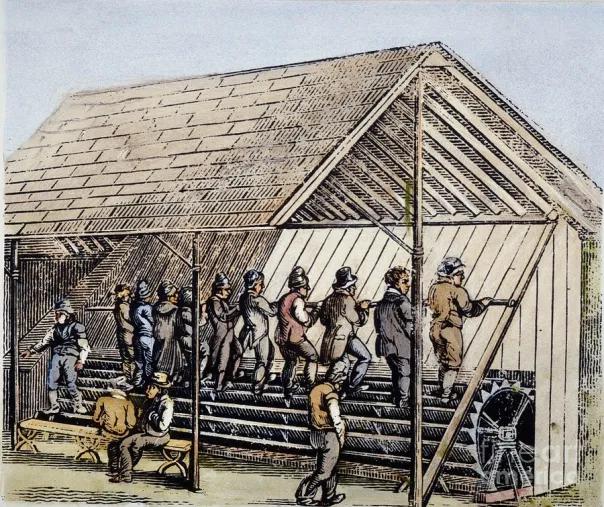
The Torture of the Treadmill
Exercising on a treadmill can be agonizing. There’s a reason for that.
While reading Charles Dickens’ A Christmas Carol this year, the dreaded machine popped off the page. You might remember early in the story when two charity collectors call on Scrooge for a donation.
“At this festive season of the year, Mr. Scrooge,” said the gentleman, taking up a pen, “it is more than usually desirable that we should make some slight provision for the Poor and Destitute, who suffer greatly at the present time. Many thousands are in want of common necessaries; hundreds of thousands are in want of common comforts, sir.”
“Are there no prisons?” asked Scrooge.
“Plenty of prisons,” said the gentleman, laying down the pen again.
“And the Union workhouses?” demanded Scrooge. “Are they still in operation?”
“They are. Still,” returned the gentleman, “I wish I could say they were not.”
“The Treadmill and the Poor Law are in full vigour, then?” said Scrooge.
The satirical Scrooge was looking for an excuse for his miserly response by ensuring that the poor and imprisoned were somehow looked after without requiring his donation. The Poor Law said that no able-bodied person was to receive money or other help except in a workhouse. Conditions in workhouses were made extremely harsh to discourage people from claiming help.
And then there was the Treadmill. In 1818, an English civil engineer named Sir William Cubitt devised a machine called the “tread-wheel” to reform stubborn and idle convicts. Prisoners would step on the 24 spokes of a large paddle wheel, climbing it like a modern StairMaster. As the spokes turned, the gears were used to pump water or crush grain. (Hence the “mill” in treadmill.) In gruelling eight-hour shifts, prisoners would climb the equivalent of 7,200 feet. The exertion, combined with poor diets, often led to injury and illness, but that didn’t stop penitentiaries all over Britain and the United States from buying the machines. In 1824, prison guard James Hardie credited the device with taming New York’s more defiant inmates. He wrote that it was the treadmill’s “monotonous steadiness, and not its severity, which constitutes its terror.”
Any of us who have tried to run for even an hour on a treadmill well know, without something to watch (television or movie), it can be torture. Then again, the gym is not a prison and we can always go for something good to eat after a workout.
Post a comment